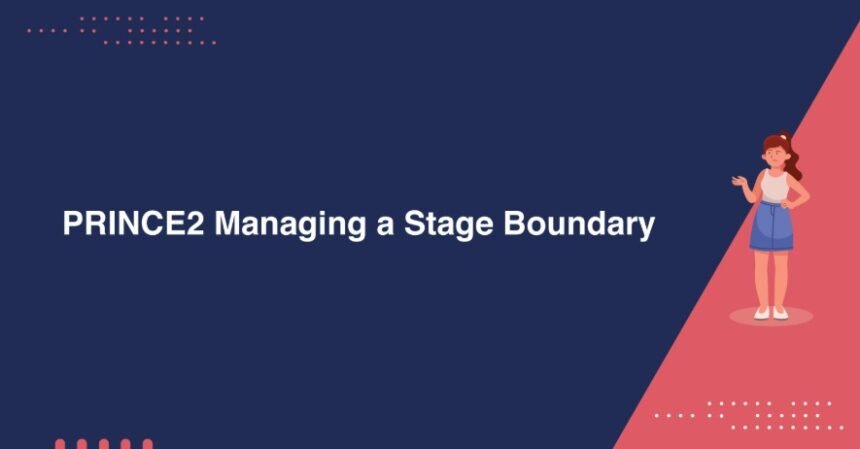PRINCE2, a process-based project management methodology, was introduced by the UK in the project management field to bring structure, organization, and repeatability to projects, improving efficiency, consistency, and predictability. The entire methodology followed seven processes to manage tasks.
“SDIM CMC” is a mnemonic technique acronym to remember the 7 processes in order, starting from starting up a project, Directing a project, Initiating a project, Managing a stage boundary, Controlling a stage, Managing product delivery, and Closing a project.
Managing a Stage Boundary is one of the PRINCE2 processes. In this article, we will delve into these processes and explore how they contribute to project viability through project boards.
Why PRINCE2 follows seven processes:
PRINCE2 is based on seven methods for managing projects to offer a controlled, logical, and adaptable framework that can be used in any type of project. These processes establish the lifecycle of a particular project, which covers activities from beginning to end and ensures that clear communication, defined roles and responsibilities, and constant management are maintained throughout the entire project.
The 7s of PRINCE2:
What is Managing a Stage Boundary?
In PRINCE2, as we saw above, managing a Stage Boundary (SB) is one of the seven key processes. It is an important decision-making point for every project leader to decide whether the project is able to continue, or if any adjustments are needed, or to stop the project promptly. This process makes sure that every stage of the project is checked properly before proceeding to the further stages. Reduce risk and keep projects on track with business goals.
After each stage, the Project manager goes through progress and prepares the Project board reports. These reports mainly highlight what has been achieved, and the business is still valid. Based on the information captured, the project board decides whether the project should be taken forward or not.
Objectives of the Stage Boundary Process:
The objectives of the Stage Boundary Process are to get to know the current stage of the project’s performance and then to develop the next plan that needs to be followed. Also, update the project documentation to confirm the project’s ongoing viability and record the lessons learned. So, by getting the project board authorization to start further management activities.
This sequenced process ensures a structured transition and brings the project board enough information to make informed decisions about the project continuation. Enrolling in the PRINCE2 Foundation course makes you a knowledgeable project manager about managing a Stage Boundary, and teaches you the basics of PRINCE2 principles, themes, and processes. And how projects are split into stages for further review and analysis at each boundary.
Key Outputs or Products of the Process:
This process produces some useful outputs:
| Output / Product | Description |
| Current Plan Actuals | Compares actual results with the original stage plan. |
| Next Stage Plan | Details what will be delivered in the upcoming stage. |
| Revised Project Plan | Updates the overall project plan with the latest progress. |
| Updated Risk Log | Tracks new and existing risks along with actions to manage them. |
| Revised Business Case | Ensures the project still delivers value to the business. |
| Lessons Learned Report | Share insights from the stage to improve future work. |
| Updated Team List | Reflects any changes in the project team or roles. |
| End Stage Report | Summarizes the results of the stage for the Project Board. |
Decision Points:
As a project manager, at each stage boundary, you should have questions about what decisions need to be made for particular scenarios. Here are some cases you need to consider.
- When the plan is in good shape and the business plan remains relevant, the project is able to proceed to the next stage. Here you can decide on ” Continue as Planned”.
- If significant risks or issues are discovered, the project might need adjustments to the plan or scope. Select ” Adjust the Project”.
- If the project’s justification for business is no longer relevant or risks are too big, the project could be terminated to avoid any further expenditure of resources, then ” Stop the Project”.
To Conclude:
Managing Stage Boundaries is important because it helps ensure accountability, control, and transparency at each phase in the process. It helps companies save money, respond to risk quickly, and focus on delivering tangible business advantages. By following this method, PRINCE2 projects stay organized, clear, transparent, and in line with their goals.








